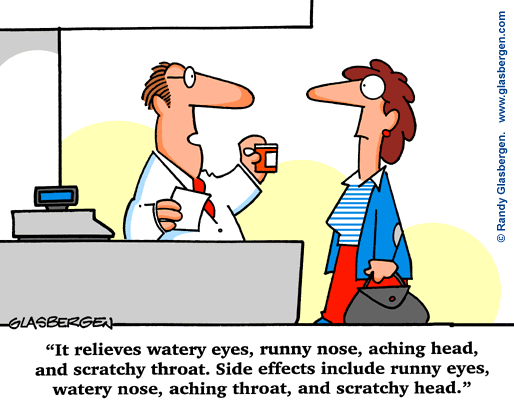Chiropractic and Professional Soccer
 Professional soccer (or football, as it is called in parts of the world outside the U.S.) is a sport that is rough on the musculoskeletal system. It’s not uncommon to see a player suddenly drop to the ground holding his leg in apparent pain. Sometimes this is just a way of slowing down the game or trying to draw a penalty. However, it can also be a sign that the player has sustained a real injury.
Professional soccer (or football, as it is called in parts of the world outside the U.S.) is a sport that is rough on the musculoskeletal system. It’s not uncommon to see a player suddenly drop to the ground holding his leg in apparent pain. Sometimes this is just a way of slowing down the game or trying to draw a penalty. However, it can also be a sign that the player has sustained a real injury.
Soccer involves movements that are particularly hard on the lower body. Players must often change direction very suddenly when running down the field. This means that they twist the upper body quickly in one direction while their feet are still planted in another. When this occurs, it places a great deal of stress on the tendons and ligaments in the knees, potentially resulting in injuries. Leg injuries can also occur when players are kicked repeatedly or are shoved or tackled when in vulnerable or awkward positions.
The legs aren’t the only part of a soccer player’s body that takes a beating. Their heads are often used to redirect a ball flying through the air at 60 or 70 mph, putting a strain on the entire spinal column. With all the twisting that soccer players do, it is easy for their spines to become misaligned, putting pressure on nerves and causing pain not only in the back, but in the limbs as well.
With all this abuse, many professional soccer players have found that chiropractic care helps keep them on the field and performing at their best. Dr. Mike Foudy, who was the team chiropractor for the Women’s World Cup Championship team said, “all but one member of the team received regular chiropractic care during their training and on the days of their matches. Chiropractic adjustments balanced their spine, removed nerve pressure and optimized the function of their bodies. All the players felt like they healed quicker from injuries and that the care gave them a competitive edge.”
A former World Cup champion from Brazil, Carlos Alberto Torres, credits chiropractic with resolving chronic disabling back pain that had kept him relying on crutches to walk. Traditional medical treatments had not helped, and finally someone referred him to a chiropractor. The chiropractic care he received enabled him to have a quick and full recovery so he could walk again without crutches and free of pain.
With the 2014 FIFA World Cup coming up in Brazil, professional soccer players will no doubt be lining up for chiropractic services. As Dr. Erik Plasker, the team chiropractor for one of the top US youth soccer teams noted, “while the other teams are scrambling to change their lineups due to injuries, our team bounces back fast and brings an energetic advantage to championship games. The players and coach agree that chiropractic care helps them compete at the highest level and avoid injuries.”
The Benefits of Phosphorus
 Our need for phosphorus is almost as great as our need for calcium. In fact, phosphorus is the second-most abundant mineral in the human body after calcium, so it’s no wonder that it has a major part to play in achieving good health. It works with calcium to ensure strong bones and teeth, helps the kidneys to filter waste products, and plays a key role in how the body uses and stores its energy. On top of all that, phosphorus is also necessary for the production of DNA and RNA, and is needed to produce, maintain and repair our body’s cells.
Our need for phosphorus is almost as great as our need for calcium. In fact, phosphorus is the second-most abundant mineral in the human body after calcium, so it’s no wonder that it has a major part to play in achieving good health. It works with calcium to ensure strong bones and teeth, helps the kidneys to filter waste products, and plays a key role in how the body uses and stores its energy. On top of all that, phosphorus is also necessary for the production of DNA and RNA, and is needed to produce, maintain and repair our body’s cells.
Even though phosphorus is as important to maintaining healthy bones and teeth as calcium, we do not hear as much about its importance in our diet as we do about calcium. This is likely because most people get enough phosphorus from their diet. In fact, some get more than is necessary (particularly if they’re not getting enough calcium), which can cause a number of health problems. Too much phosphorus in relation to calcium can lead to an increase in your risk of cardiovascular disease. The greater your phosphorus intake, the more calcium you need.
The daily recommended intake for phosphorus is as follows:
Babies 0 to 6 months: 100 mg/day
Babies 7 to 12 months: 275 mg/day
Children 1 to 3 years: 460 mg/day
Children 4 to 8 years: 500 mg/day
Adolescents 9 to 18 years: 1,250 mg/day
Adults: 700 mg/day
Conditions such as diabetes, malnutrition and alcoholism can increase a person’s risk of phosphorus deficiency. This can also be a problem for those who have conditions that create problems with absorption, such as celiac disease and Crohn’s disease. Symptoms of phosphorus deficiency may include weak bones, stiff joints, fatigue, anxiety, loss of appetite, bone pain, irritability and irregular breathing.
Foods high in protein have the greatest amount of phosphorus. Meat and dairy products, as well as nuts, eggs and legumes are good sources of phosphorus in the diet. It can also be found in whole grains and dried fruits. You generally do not have to worry about not getting enough phosphorus in your diet, as it is so prevalent in most of the things we eat. For example, one three-ounce serving of meat contains between 150 mg and 250 mg of phosphorus. What is more important is that you get a sufficient amount of calcium so that it will balance out any excess phosphorus in you get from your diet so that it does not lead to adverse health issues.
Close Up On Adverse Drug Reactions
 You can’t switch on a television these days without seeing a commercial for some new pharmaceutical that will cure whatever may ail you (or cure you from an illness you never knew you had). If you pay attention to it, you will notice that nearly half the ad time is taken up with a long list of possible side effects and adverse reactions that may accompany taking the drug. The possibilities often include everything from slight fatigue to death.
You can’t switch on a television these days without seeing a commercial for some new pharmaceutical that will cure whatever may ail you (or cure you from an illness you never knew you had). If you pay attention to it, you will notice that nearly half the ad time is taken up with a long list of possible side effects and adverse reactions that may accompany taking the drug. The possibilities often include everything from slight fatigue to death.
An estimated 4.5 million Americans visit their doctor or the ER each year due to adverse reactions to prescription drugs. These adverse side effects are also suffered by an additional 2 million people each year who are already in the hospital being supervised by medical professionals. The CDC estimates that 82% of Americans are taking at least one drug, and 29% are taking five or more drugs.
The US Food and Drug Administration (FDA) is in charge of approving pharmaceutical drugs for sale in the US. However, their methods for approval are based on the drug companies providing their own scientific studies on the safety of the drug. The FDA does no independent testing. The FDA will usually approve a drug if its benefits are believed to outweigh its dangers. Even assuming the drug companies’ studies have been well-conducted and show that a drug is relatively safe, no drug is completely free from side effects for everyone, even those drugs that are “natural.” A person’s age, weight, gender, overall health and genetic profile have a lot to do with how an individual will respond to a drug.
The most common side effects are gastrointestinal problems, as most drugs are processed via the digestive tract. These problems include nausea, vomiting, constipation and diarrhea. Other common side effects are drowsiness, fatigue and mild skin reactions. Although dizziness may not seem like a dangerous side effect, it can be particularly risky for seniors. According to the Centers for Disease Control and Prevention (CDC), falls among seniors are the leading cause of injury-related death. A quarter of all seniors who fall and break a hip will die within six months of receiving the injury.
Death is of course the most serious side effect of all. Allergic reactions that cause anaphylaxis can be deadly. Some drugs, such as those that treat type 2 diabetes (Actos and Avandia, for example) can cause a stroke or heart attack. Antidepressants can actually increase suicidal thoughts. Some drugs can cause pain and total or partial paralysis, such as the cholesterol-lowering drug Lipitor. Some drugs increase your risk of cancer. Ironically, the drug Tamoxifen, prescribed to treat breast cancer, actually increases the risk of uterine cancer. Memory loss, hallucinations, loss of taste and loss of sight are other common side effects of pharmaceuticals.
Although there is no doubt that some pharmaceuticals are far more useful than they are dangerous (antibiotics, for example), if you want to avoid the harmful side-effects that many drugs may produce, try to keep as healthy as possible. Eat right, get regular exercise and visit your chiropractor to keep your body in top condition.
Pros and Cons of Drinking Juice
 Look on any supermarket’s shelves these days and you’ll see a huge variety of fruit juices, far more than were ever seen in our parents’ day. Orange juice (or occasionally grapefruit, apple or tomato juice) was the juice that typically appeared on most American breakfast tables. Now, it is possible to get juices in all manner of combinations, including such exotic fruits as mango, guava, pomegranate, goji berry and more. And although many of these juices have a healthy serving of vitamins and minerals, they also may have their fair share of calories and sugar. So is fruit juice good for us or not? Following are some of the pros and cons of drinking fruit juice.
Look on any supermarket’s shelves these days and you’ll see a huge variety of fruit juices, far more than were ever seen in our parents’ day. Orange juice (or occasionally grapefruit, apple or tomato juice) was the juice that typically appeared on most American breakfast tables. Now, it is possible to get juices in all manner of combinations, including such exotic fruits as mango, guava, pomegranate, goji berry and more. And although many of these juices have a healthy serving of vitamins and minerals, they also may have their fair share of calories and sugar. So is fruit juice good for us or not? Following are some of the pros and cons of drinking fruit juice.
Pros:
Easy way to get fruit – One 4-ounce glass of fruit juice counts for one full serving of fruit, so if you are too rushed to eat an apple you can down some juice. While fruit juice does not contain the fiber that makes eating the whole fruit so healthy, it is still better than getting no fruit at all.
Good source of vitamins and antioxidants – One glass of orange or grapefruit juice can supply more than your daily requirement of vitamin C, boosting your immune system and providing you with free-radical-fighting antioxidants. It is also an excellent source of folic acid (which prevents birth defects and is good for heart health) and potassium (which helps to regulate blood pressure).
Cons:
High in calories – Pam Birkenfeld, as pediatric nutritionist at New York’s Nassau University Medical Center says, “Parents tend to think that because fruit juice is fat-free and comes from nature, it’s OK. But what they often don’t realize is that it is a very concentrated source of calories that generally does not fill you up, just out.” There is an average of 140 calories in an 8-ounce glass of fruit juice. If you consume a few glasses each day, those calories can add up. In contrast, an orange has only about 60 calories.
High in sugar – Our increased consumption of sugar has been implicated as being a major contributor to the skyrocketing rates of obesity observed in the Western world. Studies have shown that children who are overweight drink 65 percent more sugary juices than children of normal weight. Some juices contain more sugar that sweetened soft drinks. Grape juice, for example, has 50 percent more sugar than Coca Cola.
Bad for your teeth – One study found an 84% reduction in the hardness of tooth enamel after drinking orange juice for just five days. Researchers believe other juices may have a similar effect, as their acidity is similar. Tooth decay and cavities in children as young as two or three years old have become commonplace, and dentists point to the increased intake of fruit juice as the cause. The combination of acid and sugar is the perfect storm for tooth decay. Experts advise that children drink fruit juice no more than once a day, and instead drink milk or water. If fruit juice is taken, it can be watered down to dilute the acid concentration.
By weighing these pros and cons you can decide for yourself how much juice you and your family should drink to get the benefits of drinking fruit juice while minimizing the drawbacks.
Improving Your Energy Levels
 Sometimes it seems that even the simplest everyday tasks are hard to accomplish, even after we get a decent night’s sleep. Our busy lives leave little time to stop and recharge our batteries, so sometimes it can feel as though we’re operating on a chronic energy deficit. However, there are ways of gaining that energy back. It all starts with recognizing the little places where it is likely to leak away. Here we provide some tips on how to improve energy levels.
Sometimes it seems that even the simplest everyday tasks are hard to accomplish, even after we get a decent night’s sleep. Our busy lives leave little time to stop and recharge our batteries, so sometimes it can feel as though we’re operating on a chronic energy deficit. However, there are ways of gaining that energy back. It all starts with recognizing the little places where it is likely to leak away. Here we provide some tips on how to improve energy levels.
– Studies published in the journal Nutritional Health found that those who skipped any meal during the day had greater feelings of fatigue overall than those who ate regular meals. Breakfast is particularly important, as it jump-starts your system to prepare you for the day. Just avoid eating sugary breakfast foods, as it will only lead to an energy crash mid-morning. Eggs, oatmeal and smoothies are all good choices to provide you with energy that will last throughout the morning.
Drink more water – A lack of sufficient water can leave you feeling sluggish, even if you are only slightly dehydrated. A study published in the Journal of Nutrition found that women who were only 1% dehydrated reported feeling fatigued and depressed, in comparison with the participants who were optimally hydrated. You don’t need to drink 8 glasses a day, but if you find yourself feeling tired, drink a glass of water and it may boost your energy.
Get more magnesium – This mineral is responsible for over 300 of the body’s biochemical functions, including creating energy from the breakdown of glucose. According to the USDA, almost 60% of the American population is deficient in magnesium. When levels are even just a little low, your energy can drop. Increase your intake of magnesium-rich foods such as nuts, seeds, whole grains and dark chocolate.
Get some exercise – Contrary to what you may think, exercise actually increases energy levels. Walking is particularly good for giving you more get-up-and-go. The results of a California State experiment found that subjects taking a brisk, 10-minute walk reported increased energy levels for the following two hours.
Reduce stress – Of course this is easier said than done, but there are stress reduction techniques you can learn to lower levels of energy-zapping stress in your life. Yoga, deep breathing and meditation are good ways to handle stress. Slow, deep breathing through the abdomen has been practiced by eastern cultures for centuries as a way of increasing energy. Even things as simple as listening to music or reading a book can help you to relax.
Meditation and Your Health – What Science Says
 Researchers have found in study after study that meditation can offer both mental and physical health benefits. Doctors and integrative health programs increasingly prescribe meditation techniques alongside traditional treatments to achieve a wide range of health goals, from increasing immunity to lowering high blood pressure and reducing the symptoms of irritable bowel syndrome. On the surface of things, meditation would seem to offer a variety of benefits-if it actually works. After all, it’s non-invasive, drug-free, and costs nothing. So how effective is it?
Researchers have found in study after study that meditation can offer both mental and physical health benefits. Doctors and integrative health programs increasingly prescribe meditation techniques alongside traditional treatments to achieve a wide range of health goals, from increasing immunity to lowering high blood pressure and reducing the symptoms of irritable bowel syndrome. On the surface of things, meditation would seem to offer a variety of benefits-if it actually works. After all, it’s non-invasive, drug-free, and costs nothing. So how effective is it?
Approximately 500 clinical trials have been performed on the health effects of meditation, of which about 40 have been long-term studies. Short-term studies have found that meditation may reduce the risk of Alzheimer’s, and that it improves memory and general cognitive functioning.
Of the long-term studies, a nine-year study of African-Americans with heart disease found that those who regularly practiced Transcendental Meditation (TM) twice a day had a 48% lower risk of stroke, heart attack or death than those who had only receive health education. They reported significantly less stress and had 5mmHg lower systolic blood pressure.
Two studies from Ohio State University found that meditation was effective against cancer. The first showed that breast cancer survivors had a lower recurrence of the disease with the daily practice of relaxation meditation. The second found that meditation increased the elderly subjects’ “killer cells,” providing more resistance to viruses and tumors.
Meditation has also been found to cause epigenetic changes by helping to maintain telomere length. Telomeres are the protective sheaths at the ends of our chromosomes, which become shorter as we age, increasing the risk of dementia, heart disease and cancer. A study published in the International Journal of Geriatric Psychiatry showed a 43% greater increase in activity of the enzyme that regulates telomere length in those who meditated as opposed to those who just listened to relaxing music.
Those suffering from irritable bowel syndrome will be glad to learn that meditating twice daily can significantly reduce symptoms of constipation, bloating and diarrhea. It has also been shown to reduce depression and impart a general sense of calm.
Scientists believe that one of the major benefits of meditation is that it lowers stress. Stress causes the release of hormones such as cortisol, which stimulates the “fight or flight” response, increasing blood pressure and stress on the arterial walls. Although one of the roles of cortisol is to control inflammation in the body, with prolonged exposure to it (which is what happens with chronic stress), the body eventually becomes unresponsive to the hormone. Despite the adrenals pumping out more cortisol to try to keep up, inflammation continues to increase. By lowering stress, inflammation is reduced throughout the body, resulting in a reduction in the symptoms of chronic disease.
The practice of meditation is a simple one that anyone can perform once or twice a day for 10-15 minutes sessions. Sit comfortably cross-legged on the floor or in a chair with your feet flat on the floor and your spine straight. With eyes open or closed, simply bring your attention to your breath and notice it as it comes in and goes out. When your mind begins to wander (which it always will), just bring your attention back to the breath. Some find it useful to focus on each part of the body, mentally relaxing each muscle as you focus on it.
While there’s growing awareness among the general public that meditation can significantly improve people’s quality of life, there’s also plenty of evidence that meditation can offer specific physical and mental health benefits. If you’re interested in learning more, we encourage you to call or visit our office!
How Much Sleep Is Too Much?
 We all know how important it is to get a good night’s sleep and the detrimental effect on our health if we get too little of it. However, it is also possible to get too much sleep, and this may be even worse than getting too little. Sleeping too much has been shown to be a possible indication of underlying health problems, such as heart disease, diabetes, low thyroid and obstructive sleep apnea, and is liked to an increased risk of early death.
We all know how important it is to get a good night’s sleep and the detrimental effect on our health if we get too little of it. However, it is also possible to get too much sleep, and this may be even worse than getting too little. Sleeping too much has been shown to be a possible indication of underlying health problems, such as heart disease, diabetes, low thyroid and obstructive sleep apnea, and is liked to an increased risk of early death.
Everyone’s need for sleep differs, and there are good reasons for occasionally having to sleep more, such as during periods of high stress or illness. But on average, experts suggest that the optimum amount of sleep to get on a regular basis is between 7 and 9 hours a day. One study showed that those who slept between 9 and 10 hours per night were 21% more likely to become obese over a period of 6 years than those who slept between 7 and 8 hours a night. Another study of 72,000 women found that those who slept between 9 and 11 hours a night had a 38% greater likelihood of coronary heart disease than those who slept 8 hours.
Depression and low socioeconomic status have also been linked with sleeping too much, so it may be that oversleeping is one of the symptoms of these conditions rather than being a cause of the detrimental health effects associated with oversleeping. People with these conditions are less likely to seek or be able to afford health care, so any underlying health problems may not be discovered and treated.
When underlying health and mental problems have been ruled out, people who still feel a strong need to sleep for 70 hours or more per week have what is called primary hypersomnia. Many with hypersomnia go undiagnosed, as it often develops in the teenage years and can be attributed to typical teenage behavior. A study was performed by researchers at Atlanta’s Emory University on people with this condition. The researchers found that one of the major factors implicated in hypersomnia is the presence of a certain substance in the person’s cerebrospinal fluid that acts much in the same way as a sleeping pill. Emory researcher Andrew Jenkins said, “We know why you’re sleepy-your brain is sedating itself.” It is typical for people with hypersomnia to simultaneously experience low levels of energy, anxiety and memory problems, in addition to extreme sleepiness throughout the day that is generally not relieved by napping.
Obstructive sleep apnea is a condition that causes the sufferer to stop breathing for short periods of time during sleep, keeping them from getting to the stage of restful, restorative sleep that is necessary for proper physical and mental functioning during the day. Some prescription medications and the overuse of alcohol can also lead to oversleeping.
If you find yourself consistently sleeping more than 9 hours a day and are also sleepy throughout the day, it is a good idea to consult with your doctor to rule out any underlying medical conditions that may be contributing to your oversleeping.
Tips for Raising More Active Kids
 With rates of childhood obesity at epidemic levels, there has been a greater push to get children to eat healthier and be more active. Diet is an important part of raising healthy children, but so is exercise. Unfortunately, many areas of the country have had their educational budgets cut to the point where physical education programs are being sharply reduced or even eliminated. Many schools are also shortening recess periods in an effort to increase instruction time. Combine these developments with the fact that many kids get little or no physical activity at home, and it’s easy to see why exercise has become a focus in the effort to curb childhood obesity rates.
With rates of childhood obesity at epidemic levels, there has been a greater push to get children to eat healthier and be more active. Diet is an important part of raising healthy children, but so is exercise. Unfortunately, many areas of the country have had their educational budgets cut to the point where physical education programs are being sharply reduced or even eliminated. Many schools are also shortening recess periods in an effort to increase instruction time. Combine these developments with the fact that many kids get little or no physical activity at home, and it’s easy to see why exercise has become a focus in the effort to curb childhood obesity rates.
Frances Berg, an expert in childhood obesity, says “Because young children naturally move around a lot, many people assume they are getting all the physical activity they need. But today TV and videos often keep them still for longer periods than parents realize.” And any parent knows how difficult it can be to tear kids away from the TV or computer. The trick is to make the alternatives interesting for them. Berg says, “Physical activity should be a fun part of daily life and never forced. If children begin to associate being active with having fun, they’re more likely to stay active as they grow up.” Following are a few tips for raising more active kids
* Limit electronics- Time sitting in front of the TV or computer should be limited. Children should spend no more than an hour or two of each day with these devices. One way of keeping them active while playing a video game is to invest in a Wii, which at least gets them up and moving.
* Start a garden – Gardening is very active work, and kids love to watch the seeds they planted grow.
* Walk or bike to school – It’s a great way of getting exercise at least twice a day, and you don’t have to worry about getting stuck in traffic! It’s also a good time to hear about your child’s concerns or talk about how their day went.
* Wash the car together – Kids love playing around with water and suds, and in the end you’ll have a clean car too.
* Take a hike – Pack a healthy picnic lunch and go for a hike with your kids. You can make it more interesting for them by having them be on the lookout for certain birds or animals as you hike.
* Dance around the house – Put some music on while preparing dinner and dance around the kitchen with your kids.
* Throw a ball or Frisbee – Not only will it provide fun exercise, it will build eye-hand coordination as well.
* Set a good example – Take the stairs instead of the elevator, park far from the entrance to a store, etc. This will get your kids in the habit of being more active.
Encouraging your children to be more active will help to burn off the excess energy they have, making them happier and more able to focus during quiet times. It will also help them build healthier lifestyle habits for the future!

